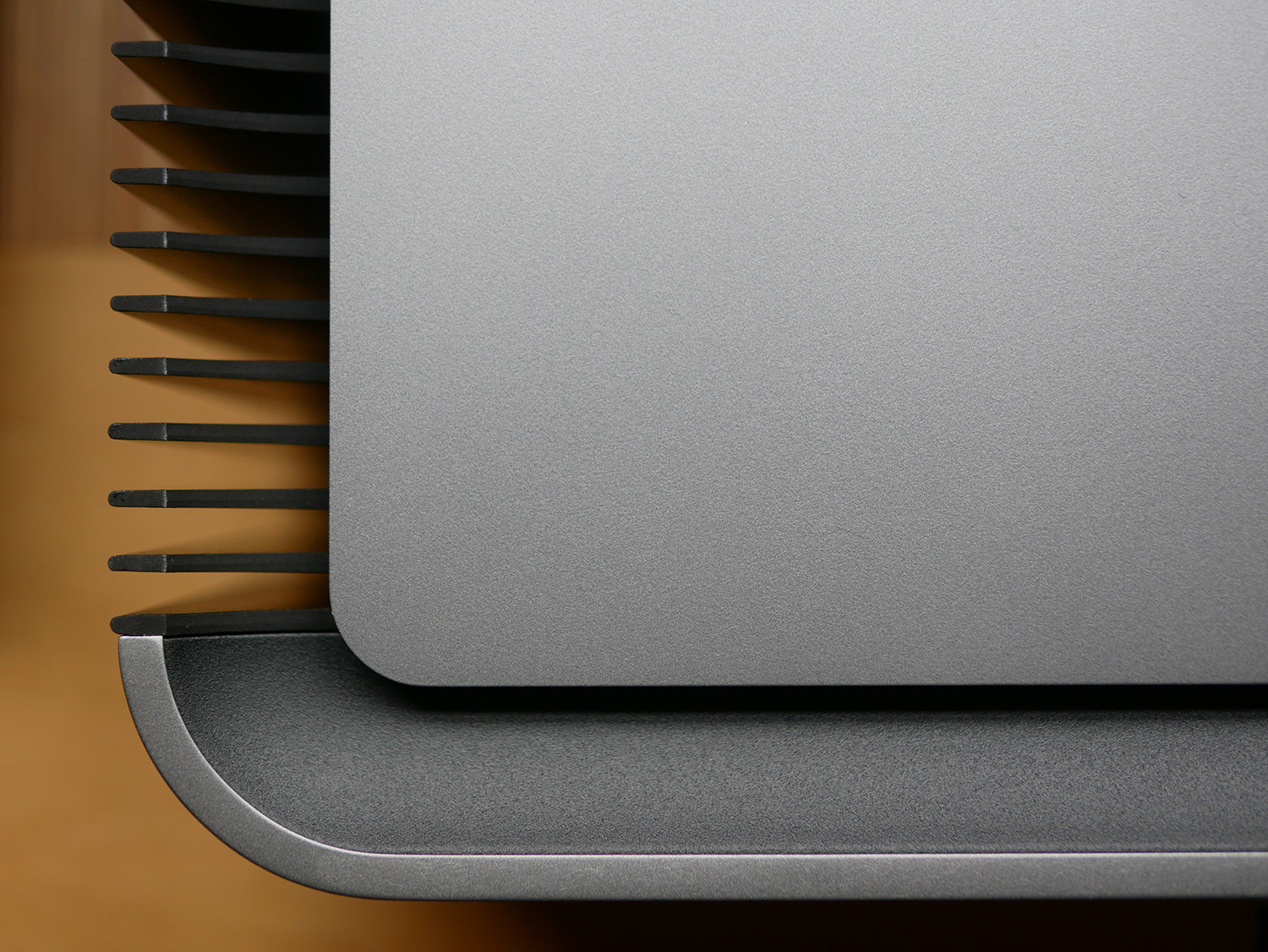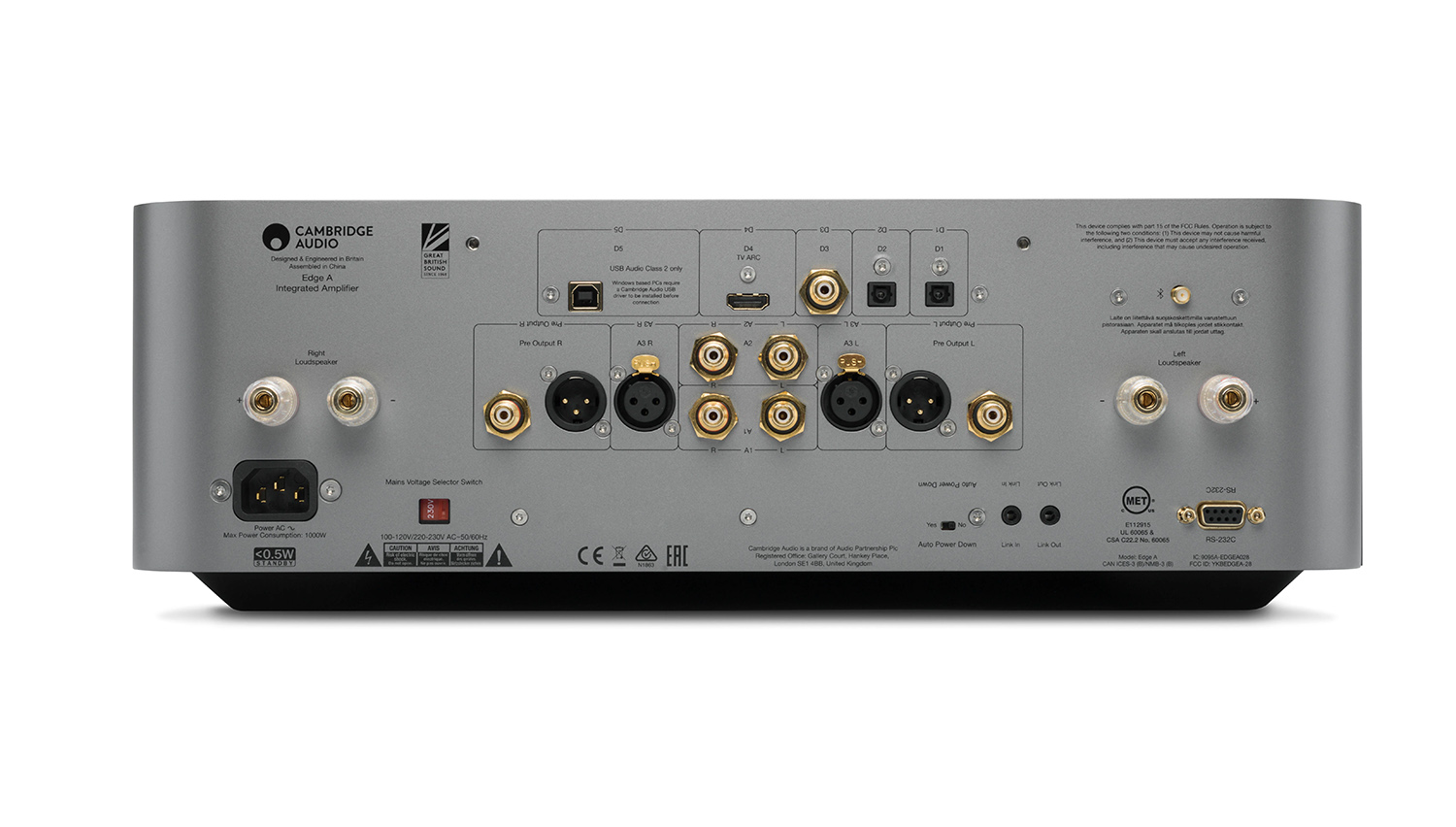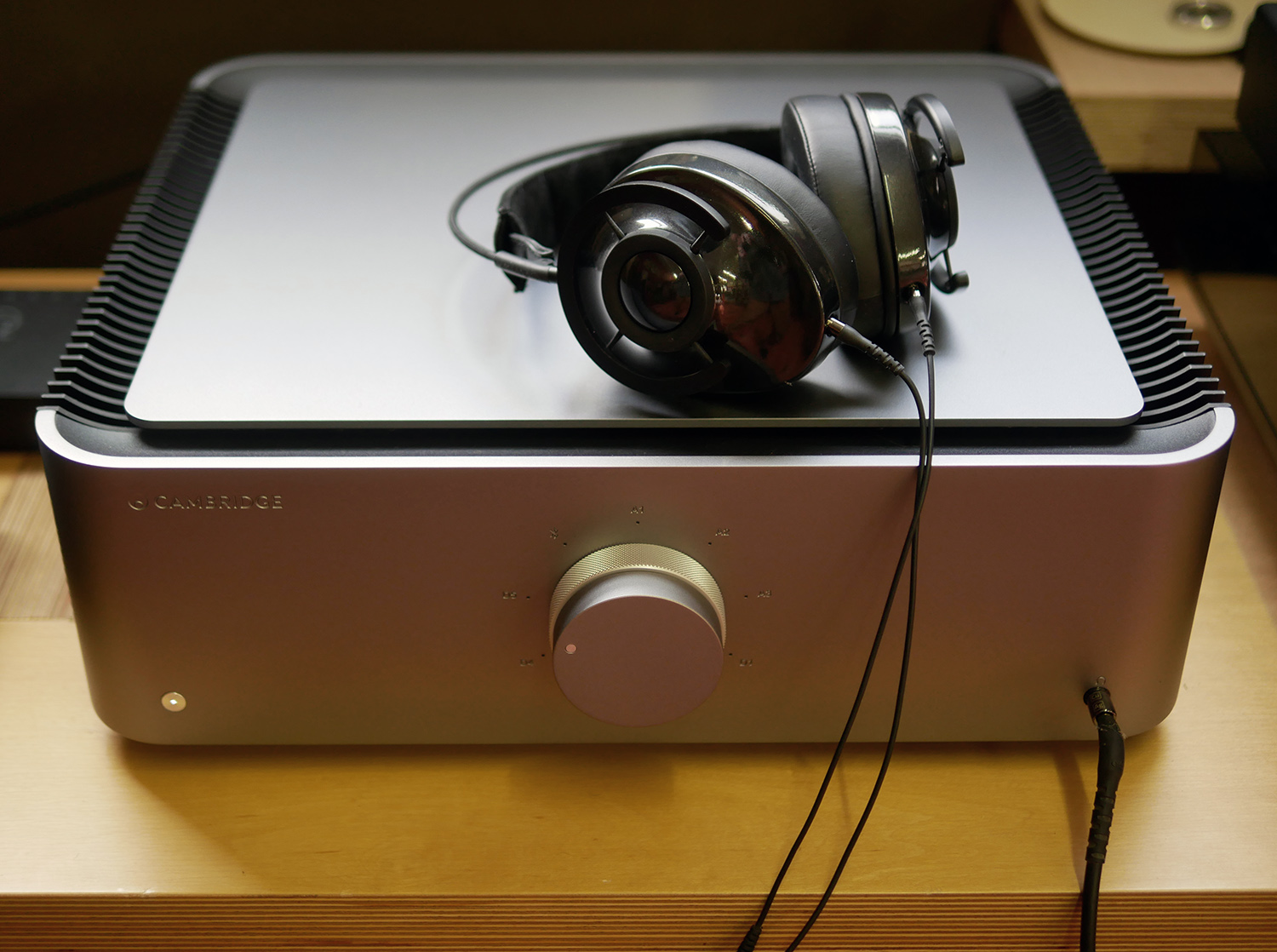
The package. Does it make sense to get excited about a product that offers the complete package? The whole enchilada? The kit and caboodle?
Of course it does. A piece of hifi gear, every piece of hifi gear, embodies the thingness of the thing, to make a mess of Heidegger. Integrated amplifiers, DACs, and speakers live among the other things we choose to live with like sofas, chairs, and carpets. It follows that some amount of pleasure is therefore permissible in how things look. In how they feel. Unlike seating and floor covering, our hifi’s also house technology for making music so it certainly follows that how they sound should also provide pleasure. The pleasure principle in full swing, so to speak.

The fine folks at Cambridge Audio designed their Edge Series in celebration of the company’s 50th anniversary, honoring Gordon Edge, an early Cambridge engineer who was responsible for their first product the P40 integrated amplifier. I think it’s safe to say, they threw everything they had at the Edge series of products that also includes the Edge W Power Amplifier, Edge M Monoblock Power Amplifiers, and the Edge NQ Preamplifier / Network Player.
The marketing goes like this:
In the build-up to our 50th anniversary, we asked our engineers a simple question – what would they make if anything was possible?
Forget cost. Forget limitations. Create a system that delivers previously undiscovered layers of detail, is highly transparent, offering superlative sound-staging. A product true to Cambridge Audio’s foundations of creative innovation and entrepreneurial ambition.
Over 3 years in the making, utilising a team of 9 engineers, the result is Edge.
That’s a nice story.
The Edge A Integrated Amplifier makes use of the company’s proprietary Class XA Amplification, offering the benefits of Class A and AB by essentially moving Class AB’s crossover point outside of the audible range. Opposing symmetrical twin toroidal transformers are employed, cancelling out electromagnetic interference, while coupling capacitors were nixed in favor of DC coupling thereby reducing distortion. All these claims are, or course, according to Cambridge.
Component choice, and this is another favorite part of the story, followed the listen first, measure later approach.

The Edge A delivers 100wpc into 8 Ohms, doubling down into 4. In addition to its integrated amplification duties, the Edge A includes a built-in DAC with USB and S/PDIF (2x Toslink, 1x Coax) inputs, adding to the three analog inputs (2x RCA, 1x XLR). You can also beam to the Edge A via Bluetooth and bypass the internal amplifier using the Pre-Out outputs (RCA, XLR). A single pair of speaker multiway binding posts carry the signal to your speakers.

Weighing in at about 54 lbs., the Edge A’s curved extruded aluminum front and matching rear panel offers symmetry from every angle. Add in a floating top plate and side mounted heat sinks, and you’ve got one beautiful and solid piece of kit. I’m reminded of Kurt Schwitters’ lovely An Anna Blume:
You can be read from behind, and you, you
loveliest of all, you are from behind as you are
from the front: “a-n-n-a.”
Maybe “A” stands for “Anna”? I’m going to pretend it does.
The Edge A’s face is minimally adorned and includes one of the most pleasurable to use dual-function volume/input control knobs I’ve had the pleasure to turn. While Cambridge includes a hefty machined aluminum remote, I often found myself walking over to my rack just to turn that knob. A small flush mounted on/off button sits on the lower left, a 1/4″ headphone jack sits on the lower right, and the company logo is recessed into that curved extruded aluminum panel.
The Edge A spent all of its time driving the DeVore Fidelity O/93 speakers and I paired it with a number of digital sources and streamers. Everything was wired with wires from AudioQuest including Earth interconnects, Coffee Coax cables, and Robin Hood speaker wire.

The Edgeless Edge A
There is nothing edgy about the Cambridge Audio Edge A Integrated Amplifier. When reproducing music, it imparts a silky smooth texture to music’s various voices, a kind of hands-off sound that makes for an inviting naturalness. It sounds, to borrow a cliche, like a Class A amplifier. Based on the warmth of the top plate, it’s operating much closer to A than AB. Forget about D.
Dry Cleaning’s New Long Leg has been getting a lot of Barn time of late, as its one of my favorite recent releases. It’s also a fine sounding album, all twangy, lean and leggy. When played through the Edge A, New Long Leg sounds positively sexy, with all that space, awkward grace, and beautiful big round bass. The air that inhabits the space around each player and Florence Shaw’s narrated lyrics makes for a big, voluptuous sound. Weight, lean, and clean.
Lianne La Havas’ Live At The Roundhouse is one of the wettest sounding records on record and the Edge A presents every plucky slap of Havas’ fluid guitar work with a gentle ease while caressing her vocals with all the finesse and nuance needed to make her feel present. There’s a dimensional purity coupled with a spatial clarity that I’ve come to associate with a lack of noise. The quieter the gear, the more you hear (don’t quote me on that).
I spent weeks of uninterrupted time letting music flow through the Edge A and this experience is best summed up with one word: enjoyment. No matter the music, no matter the complexity or simplicity, the Edge A delivered edge of your seat performances with grace, power, and purity. When fully focused in on listening to music mode, there was nothing lacking with the Edge A’s way with music.

I was charmed, for sure, by the Edge A’s complete package — looks and plenty of booty and beauty to boot.
The resident Ayre EX-8 Integrated Hub combines a DAC, streamer, and integrated amplifier in one package. In this fully loaded incarnation, the EX-8 comes in at $7850 so a fair comparator for the Edge A. First off, the Ayre’s workman-like appearance pales in comparison to the Edge A’s a-n-n-a good looks. Case closed. On the sound front, the Ayre revealed more nuance and micro-detail as compared to the Edge A, while holding onto the bigger sound picture. I would give the edge to the Edge in terms of overall fluidity, ease, and a sweet ripeness that makes music sound a bit rounder, fuller, and richer.
Both of these fine integrated amplifiers spec out at 100wpc yet the Edge A sounds gutsier. If you look at the Edge A’s measurements in Stereophile, you’ll see it actually over-performs when it came to output power. If you read the review, you’ll see that my friend and colleague Ken Micallef also enjoyed his review time, the Edge A provided a funhouse of music enjoyment, bringing fresh light to old discs and new discoveries with every medium.
Just for fun, and to part-performance things out, I used the Edge A’s Preamp outputs, bypassing its internal amplifier with the Parasound JC 5 Amplifier which comes in at $6000, or the price of the Edge A. In other words, not a fair comparison. As you might expect, the Parasound pumped things up more than a few notches in nearly every category of reproduction. Dry Cleaning took on even more weight and presence while that bass, that bass!, took up residence in Barn, sounding fuller and richer and oh-so-round. Reach out and touch it round. There’s something to be said for seemingly unlimited power, and the Parasound’s 400 Watts per channel made the DeVore O/93 evaporate into a cloud of pure sound.
Admittedly this was not really a real-world comparison since no one in their right mind would buy the Edge A for its preamp alone. Buyers of separates would certainly look up the line at the Edge M, W, and NQ. The main reason for this exercise was to put the Edge A’s performance in a broader perspective.
Most of my listening was done with the Edge A’s internal DAC, using the Primare NP5 Prisma streamer or the Raspberry Pi4 mated to the Denafrips IRIS DDC, which takes a USB input and converts it to, in this case, a Coax output. I found the later to be my preferred streamer setup with the Edge A as it delivered more weight and presence as compared to the Primare, which is no slouch. If wishes were fishes, I’d love to see Cambridge include their Stream Magic streaming platform in the Edge A but as it stands, the streamer you choose to use will certainly have some sonic relevance in terms of the Edge A’s analog output. Choose wisely.
For another perspective test, I let the totaldac d1- DAC/Streamer, which costs more than the Edge A, taker over digital duties and I was not surprised, again, to find that the totaldac offered an even great sense of organic wholeness and a richer tonal palette. That being said, I don’t see bypassing the Edge A’s internal DAC as a reasonable approach to system building. If you want to part things out, look at separates.
As is my wont, I took the Edge A’s headphone amp for relatively brief spin using the AudioQuest NightOwl ‘phones. Phoebe Bridgers Copycat Killer sets some her songs to strings and the Edge / NightOwl combo was pure delight. Big, open, and airy, coupled with finesse and drive were the sonic themes for this session and this headphone listening experience reminded me of another of the Edge A’s standout qualities when playing through the DeVore’s — dynamic snap, percussive slam. The Edge A is one convincing boogie machine.

A Complete Package
It’s not very often that I find myself captivated by the complete package. In my experience, many a hifi component looks as if design is seen as a necessary evil. Something that can be addressed with a thicker faceplate and maybe, just maybe, a rounded corner or two.
The Cambridge Audio Edge A is a stunner with looks and performance aimed to do more than please. In my eyes and ears, Cambridge has done their history proud by making one of easiest integrated amplifiers to heartily recommend without reservation. Bravo!

Cambridge Audio Edge A Integrated Amplifier
Price: $6,000
Company Website: Cambridge Audio

